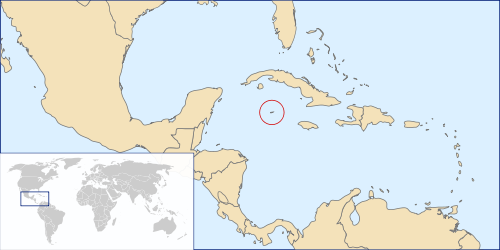 The Cayman Islands (pronounced /ˈkeɪmæn/ or /ˈkeɪmən/) is a British Overseas Territory located in the westernCaribbean Sea. The territory comprises the islands of Grand Cayman, Cayman Brac, and Little Cayman, located south of Cuba and northwest of Jamaica. It is considered a part of the geographic Western Caribbean Zone. The territory is a major offshore financial centre in the Caribbean.
The Cayman Islands (pronounced /ˈkeɪmæn/ or /ˈkeɪmən/) is a British Overseas Territory located in the westernCaribbean Sea. The territory comprises the islands of Grand Cayman, Cayman Brac, and Little Cayman, located south of Cuba and northwest of Jamaica. It is considered a part of the geographic Western Caribbean Zone. The territory is a major offshore financial centre in the Caribbean.
Though discovered by Christopher Columbus in 1503, the islands were never occupied by the Spanish. Ceded to the British in 1670, they were subsequently settled by the English arriving from Jamaica. The islands were administered as a dependency of Jamaica until Jamaican independence in 1962. A constitution was enacted in 1972; it was replaced in 2009. The governor of the Cayman Islands is appointed by the British crown. The islands are a popular tourist area and a financial centre.
Traditional Caymanian music was a ‘Kitchen band’, which was composed of a fiddle, drum, spoon and bottle, washboard, and possibly a harmonica or guitar. There is currently a band of Caymanians who perform as the Kitchen Band during cultural celebrations, such as Cay Fest or Heritage Days during Pirate’s Week. This type of music is often fast-paced, and bears similarities to country and calypso music.
With no direct taxation, the islands are a thriving offshore financial center. More than 68,000 companies were registered in the Cayman Islands as of 2003, including almost 500 banks, 800 insurers, and 5,000 mutual funds. A stock exchange was opened in 1997. Tourism is also a mainstay, accounting for about 70% of GDP and 75% of foreign currency earnings. The tourist industry is aimed at the luxury market and caters mainly to visitors from North America. Total tourist arrivals exceeded 2.1 million in 2003, with about half from the US. About 90% of the islands’ food and consumer goods must be imported. The Caymanians enjoy one of the highest outputs per capita and one of the highest standards of living in the world.
The Cayman Islands have more registered businesses than they have people. The latest population estimate of the Cayman Islands is about 52,000 as of 2006, representing a mix of more than 100 nationalities. Out of that number, about half are of Caymanian descent. About 60% of the population is of mixed race (mostly mixed African-European). Of the remaining 40%, about half are of European descent and half are of African descent. The islands are almost exclusively Christian, with large numbers of Presbyterians and Catholics. Caymanians enjoy the highest standard of living in the Caribbean. The vast majority of the population resides on Grand Cayman, followed by Cayman Brac and Little Cayman, respectively.
Notes from Wikipedia and Answers.com









